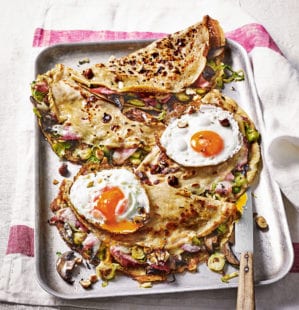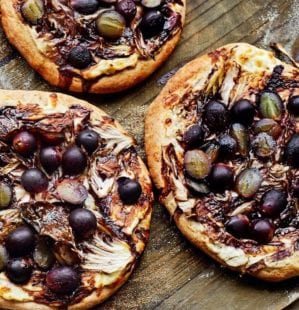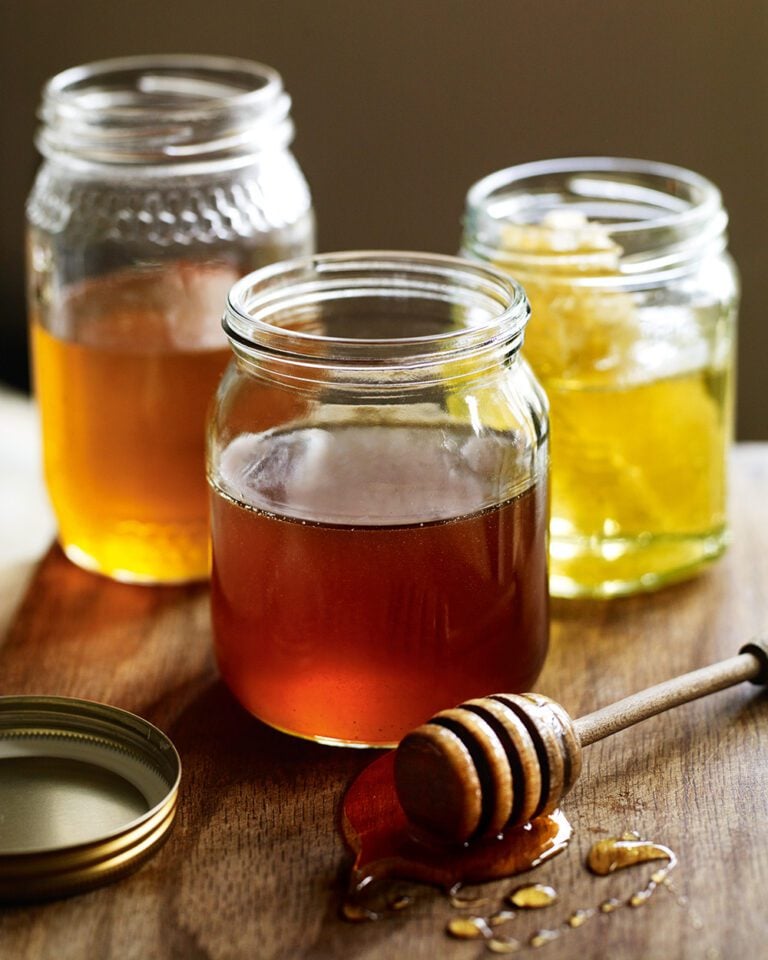Why top bakers love stone-milled flour – and the secrets to using it
Intrigued by the trend for heritage wheat – but don’t know how to start baking with it? Food writer Clare Finney investigated why diversity in wheat is so important for a sustainable future – and here she speaks to three bakers who specialise in stone-milled wheat flours ground from genetically diverse grains, to share their secrets for working with it. Are you ready to switch to baking with old-school flour? A world of adventure awaits…
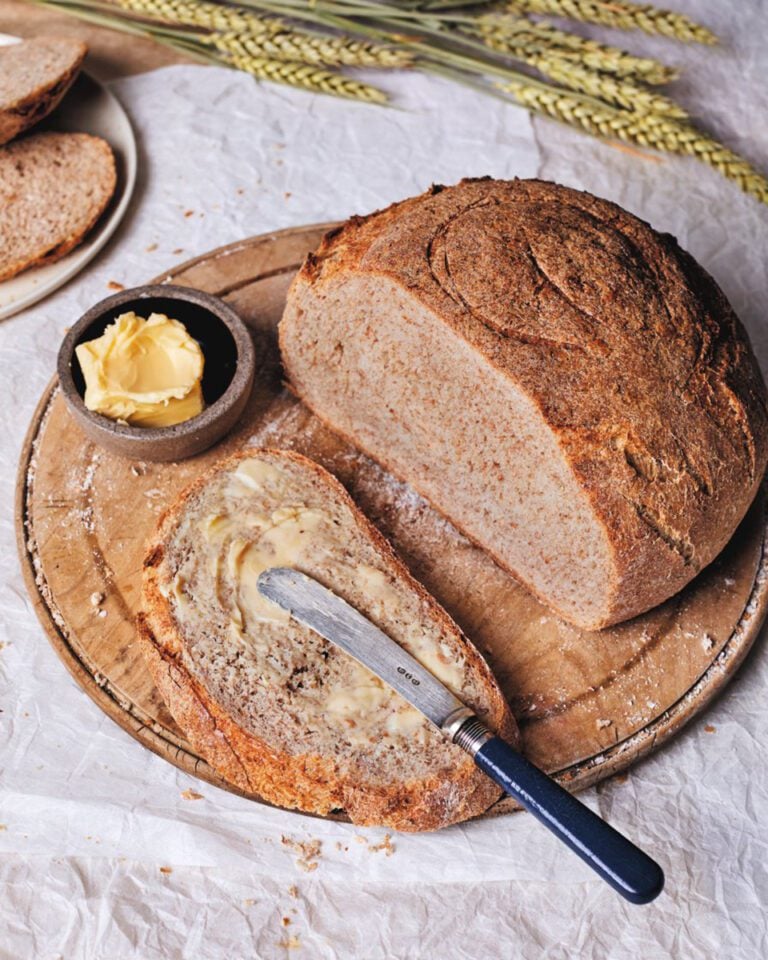
What’s all the fuss about stone-milled or stoneground flour – and what exactly is it? Until the 19th century, stone milling was the only means by which whole grains were ground into flour at scale. The mechanics are simple: two flat stone discs are put on top of each other, one of which remains static while the other is turned, slowly crushing the grain into a brown, textured flour with a rich aroma and flavour. Since industrialisation and the introduction of modern varieties of wheat, traditional mills have been usurped by huge industrial roller or steel burr mills, in which the grain is ground multiple times very quickly, then sifted to remove the bran and the germ, creating the fine white powder most people think of as flour today.
The advantages of modernisation were increased speed and volume of production – and longer shelf life, because the oils in the germ are what oxidise and go stale. The disadvantages, according to stone-milled lovers, were a dramatic loss in flavour and nutrition. The slow speed and cool temperature at which the millstones grind mean the grains’ nutrients and flavour are better preserved.
Meet three bakers who swear by stone-milled flour
Rosy Benson
She owns Somerset’s Field Bakery, using flour made from wheat grown outside the door.
Anna Higham
After working in top restaurants, Anna set up sustainable London bakery Quince.

Louise Lateur
From Flanders in Belgium, she’s pastry chef and managing director of E5 Bakehouse in London.
Flour with more flavour
Removing the germ and the bran from the wheat means “missing out on most of the fibre and flavour”, says Rosy Benson of Field Bakery on Gothelney Farm in Somerset. The bakery has an on-site mill and bakes solely with regionally grown grain. Unlike millstones, industrial mills are tailor-made to work with modern wheats grown in high-input systems (which use lots of agrochemicals). They can’t be adjusted for the variety found within genetically diverse ‘population grains’ and heritage grains, which invariably are grown without fungicides, pesticides and artificial fertilisers.
“The nutrients in grain from a diverse population wheat are night and day compared to a modern wheat grown on a high-input farm,” says Anna Higham, an award-winning pastry chef and sustainably minded baker (try her recipe for pissaladière scrolls).
“Good milling allows bakers like us to access all that goodness and guide it towards producing a great loaf. It was honestly a revelation the first time I used freshly milled flour in a bakery.”
Stone-milled flour is more nutritious and flavourful, but it needs to be used up quickly, while it’s fresh. That’s a great reason to buy flour from local mills and bread from bakeries who share the same values
A different kind of baking
Just as the flavour and nutrition of stone-milled flour is night and day, so is the process of baking with it – particularly where bread is concerned. Flour from heritage or genetically diverse grains varies in terms of its strength, hydration and fermentation time, making it harder to get consistent results.
White roller-milled flour is a blank page on which you impose your own agenda, but the fresh stone-milled stuff is more like a script that needs bringing to life by the director. “I look at working with good flour as guiding it and working with it to bring out its potential,” says Higham.
This isn’t as abstract as it sounds – but it’s not an exact science either, says Benson. “You need to think about the temperature and your environment, but most of all you need to tune into what your hands are feeling and learn to recognise signs of fermentation – don’t try and overcomplicate it.”

E5 Bakehouse in London’s Hackney sources a mixture of heritage and population grains from several farms, including its own in Suffolk, and mills them on site. Every day, the bakers test the gluten level of the flour, the temperature in the room and fridges, and adapt their recipes accordingly. “Every flour reacts differently, which is scary, but it’s also really fun,” says E5 Bakehouse’s pastry chef and managing director Louise Lateur.
“It sounds intimidating, but it isn’t really,” agrees Higham. “It just requires a bit of attention. Think of it like roasting a chicken. You know that sometimes your roast chicken will be different depending on the bird, how it was raised, the recipe, the oven etc. But you’ve roasted chickens before, and you’re tuned in to the signals that tell you it will be a success. Using less standardised flour is the same.”
Fresh stone-milled flour looks darker, smells richer and feels different when baking. Part of the fun is learning what to feel and look for throughout the process – and react accordingly. Experimentation is key
Becoming a flour whisperer
When it comes to baking cakes and pastries, you can use most flour for most things, says Higham. “The big difference most people will notice is how much more liquid a stone-milled flour recipe needs. Just add more water, milk or whatever the liquid is.” She recommends trying a batch of shortbread or even some pasta when starting a new flour, as both give an idea of the flavour and how much liquid the flour likes. When it comes to bread, bear in mind that the composition of the gluten and how it reacts varies. Bakers who are used to strong, high gluten North American or Canadian flours – the kind commonly found in the supermarket and conventionally used in bread – will find they need to go more gently when it comes to handling the dough. “A dough made with strong bread flour will resist being thrown about, folded lots and generally handled quite roughly,” says Higham. “A lower protein flour needs fewer folds and more gentle shaping.”
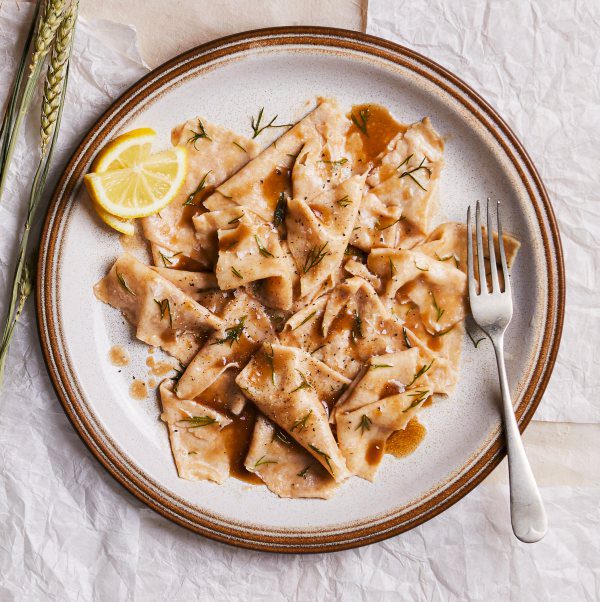
If the dough feels more slack and less elastic than you’re used to, try leaving it to ferment for longer, advises Lateur. If the shape isn’t holding during the rise, “bung it in a tin and bake it like that”, says Higham. Stone-milled flour will make “delicious, very useful, very moreish” bread.
But rather than diving straight into the deep end with 100% stone milled flour, think about introducing it slowly, advises Lateur. “Try 10 to 20% stone milled flour at first and see how it reacts.” There’s no silver bullet solution – but that’s the joy, says Benson. “You are part of the process.” Learning what to look and feel for; practising, waiting for the dough to ferment and prove “slows you down, but there is a real sense of reward at the end”.
Stone-milled flour 101
- Try a recipe you know. Make something simple such as shortbread first to get a feel for your new flour.
- Smart small. Don’t use 100% stone-milled flour immediately – start with a mix of flours.
- Add a little more liquid if the dough seems dry.
- Be gentle. It won’t make such a robust bread dough – put it in a loaf tin if it won’t keep its shape.
- Leave dough longer to rise as it might need more time to develop.
Where to buy
Find small-scale flour producers on the Britain and Ireland Community Grains Association website.
Read the first part of our feature on heritage wheat – including three great recipes that use stone-milled flour.
Subscribe to our magazine
Food stories, skills and tested recipes, straight to your door... Enjoy 5 issues for just £5 with our special introductory offer.
Subscribe
Unleash your inner chef
Looking for inspiration? Receive the latest recipes with our newsletter


